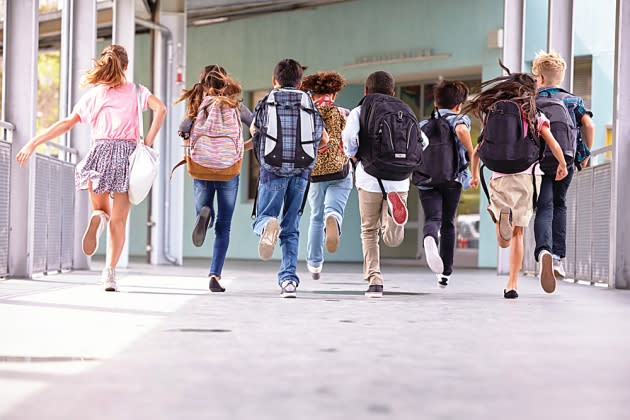Parents Won’t Skimp on Back-to-school Supplies

As inflation continues to rise, parents are cutting corners — except when it comes to buying what their kids need for school.
This year’s back-to-school spending in the U.S. is expected to match 2021’s record high of $37 billion and families with children in elementary through high school plan to spend an average of $864 on school items, about $15 more than last year, according to the National Retail Federation and Prosper Insights & Analytics.
More from WWD
The NRF and Prosper collaborated on a survey of 7,830 consumers conducted June 30 to July 7 to gauge shopping behavior for the b-t-s season. The findings were released Thursday.
Thirty-eight percent of those surveyed said they are cutting back in other spending areas to cover the cost of items for the upcoming school year.
“Families consider back-to-school and college items as an essential category, and they are taking whatever steps they can, including cutting back on discretionary spending, shopping sales and buying store- or off-brand items, in order to purchase what they need for the upcoming school year,” NRF president and chief executive officer Matthew Shay said Thursday. “The back-to-school season is among the most significant shopping events for consumers and retailers alike, second only to the winter holiday season.”
B-t-s spending has increased dramatically since the onset of the pandemic as families adjusted to changes from virtual and hybrid learning and had to spend more to buy computer equipment as well as some home furnishings, like chairs, desks and lighting, so their kids could attend classes online. The increase in spending this year is seen largely as a result of inflation and return to classrooms.
Compared to pre-COVID-19 in 2019, b-t-s shoppers are expected to spend $168 more on average, and total spending is up $11 billion.
“Back-to-college spending is expected to reach nearly $74 billion, up from last year’s record of $71 billion and the highest in the survey’s history. More college students and their families plan to shop this year compared to last and anticipate spending an average of $1,199 on college or university items, consistent with last year’s record of $1,200,” the NRF reported.
Since 2019, total expected spending on back-to-college has grown by $19 billion and consumers are spending $223 more on average than they were prior to the pandemic. Nearly half of this increase comes from spending on electronics and dorm or apartment furnishings.
B-t-s shopping, like other recent holidays, is happening earlier this year because discounts are being offered earlier. As of early July, 56 percent of shoppers had started shopping for school and college supplies, according to the NRF and Prosper.
Inflation is also spurring the earlier shopping, with consumers figuring the longer they wait, the higher the prices could get. Sixty-eight percent of the survey’s respondents said they have seen higher prices on school items. Clothing and accessories and school supplies were among the top areas where consumers noticed higher prices.
Eighty-five percent of those surveyed said they have at least half of their b-t-s shopping left, and some do figure the best deals are yet come.
This week is expected to be a big one for retailers selling b-t-s supplies and fashion, given Amazon’s Prime Day and retailers copycatting the event. In the survey, 81 percent of the respondents said they planned to use retailer deals during the week of July 11 to shop specifically for school and college items. Sixty-two percent planned to shop Prime Day deals on Amazon, 31 percent will shop online deals at other retailers and 20 percent will shop in-store deals at other retailers, according to the survey.
“We are seeing real shifts in the way people are shopping and spending on back-to-class items since before the pandemic. As a result, retailers are also shifting by bringing in inventory earlier and extending back-to-class offerings,” said Phil Rist, Prosper Insights’ executive vice president of strategy.
Prosper and NRF also indicated that b-t-s and college shoppers plan to concentrate their shopping rather than spreading it out across multiple destinations. The top five b-t-s shopping destinations are online (50 percent), department stores (45 percent), discount retailers (40 percent), clothing stores (37 percent) and electronics stores (28 percent).
Top back-to-college shopping destinations are online (43 percent), followed by department stores (36 percent), discount stores (29 percent), office supply stores (27 percent) and college bookstores (26 percent).
Sign up for WWD's Newsletter. For the latest news, follow us on Twitter, Facebook, and Instagram.


